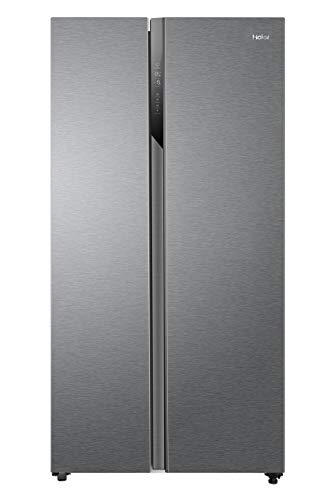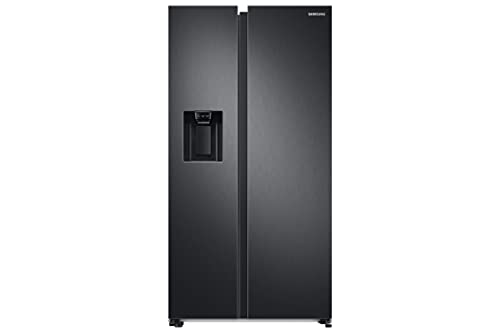Page Information

본문
 The History of the Refrigerator
The History of the Refrigerator The conventional refrigeration of foods generates significant greenhouse gas emissions due to leakage of refrigerant, as well as the use of electricity. In 2019, these emissions represented 3.2 percent of total Refridgerator Uk (Https://Squareblogs.Net) territorial GHG emissions.
The conventional refrigeration of foods generates significant greenhouse gas emissions due to leakage of refrigerant, as well as the use of electricity. In 2019, these emissions represented 3.2 percent of total Refridgerator Uk (Https://Squareblogs.Net) territorial GHG emissions.Refrigerators weren't widespread in British homes until the summer of 1959. Prior to that, the majority of households relied on cold slabs in pantries. They were inefficient and could not maintain a constant temperature.
The History of fridges for sale uk in the UK
Fridges are one of the most essential kitchen appliances that allow us to keep food and drinks fresh for a few days at a time. They're also extremely energy efficient. It's easy to forget that fridges were once considered a luxury, but. It wasn't until 1950s that they began to gain popularity. In the beginning, it was a very hot British summer that helped make them famous.
Before fridges were invented, people would use the insulated ice containers to keep their foods cool. They would harvest blocks of ice from lakes during the winter, and then keep them in storage throughout the warmer months. These Ice boxes were not ideal, however. They were heavy and had to be carried by an "ice man". The first refrigerators with electric technology came in 1918, but it took a while before they were widely used in homes.
The efficiency of fridges has improved dramatically over the years. They consume less energy than they used to a decade ago, and some fridges use just 4 kW per day (equivalent to 170 W continuously). A majority of refrigerators in the US have an A+ energy rating.
In the 1950s, manufacturers began to introduce refrigerators that had separate compartments for freezers. They also began making models with a chrome-finished finish, which was very popular at the time. Since then, refrigerators have been offered in a variety of colours and finishes. Pastel shades, such as pink and turquoise, were popular in the 1960s. Earth tone colors, such as avocado green and almond, were becoming more popular in the 1970s and 1980s. In the 90s stainless steel started to dominate.
Fridges in the 1920s
Before fridges came along, people used insulated wooden "ice boxes" to keep food and drinks fresh. Ice man would deliver blocks of ice to fill them and they'd keep the temperature cool throughout the year. Ice boxes can be found in the well-off kitchens.
In 1918 the first electric refrigerator was launched. It was placed on top of the existing ice box in a home. They were noisy, heavy and expensive. The motor was located on top of the refrigerator cabinet. They were also referred to as monitor-tops. William C. Durant bought out the Mellowes refrigerator company in 1918 and set up the Guardian Frigidaire company to mass manufacture refrigerators. Durant was influenced by a concept created by Cistercian Monk Marcel Audiffren, and Swiss Engineer Albert Singrun. This was a sulfur dioxide absorption refrigerator.
In the 1920s, these new refrigerators were reasonably priced for many homes. The new refrigerators could hold much more food and drinks, and kept them colder for longer time than the old ice boxes.
Refrigerator advertising was creative, captivating and full of promises of cold drinks and stylish designs. Vintage ads are fascinating to read as they provide an insight into what life was like back then.
At the end of the 1920s Electric refrigeration was installed in nearly all homes. Electric utilities pushed the development by offering rebates to those who purchased refrigerators. In the Great Depression, these appliances were considered vital for the survival of a home and their demand increased.
Fridges in the 1950s
Fridges became more common in the 1950s. They were not common in the 1920s. In the late 1960s, you could find them in most homes (although it is worth noting that you wouldn't have seen a fridge freezer best buy in every household in the early days, since this was an expensive purchase for many).
The first fridges were utilitarian and simple appliances that matched the decor of the kitchen. They were usually smaller fridges that were mounted on legs, with a wide variety of colors available (though most were in the pastels, i.e. mint greens). During this time there were a variety of companies manufacturing fridges including Whirlpool, Gibson, Hotpoint, and Tappan.
All of these brands were known for their high-quality, reliable refrigerators. These brands also had other types of appliances in their line. Crosley for instance was originally a radio manufacturer before launching refrigerators in the year 1940. They were known for their small refrigerators that fit well in small space.
In the 1950's, fridges grew more stylish and were advertised as an image of status for housewives. They were designed to match cabinets and walls in the kitchen, and were typically white and featured chrome handles.
In the 1960s, fridges began to morph into gadget-driven appliances with features like separate freezer sections as well as ice cube makers. The manufacturers also began to employ cheaper materials, allowing them to sell their products at lower costs.
Fridges in the 1960s
fridges freezers finally became a staple in most households during the 1960s, with a lot of families having two fridges. In the 1960s, an average American fridge cost $600 (roughly $7000 in 2024 dollars). At the close of the decade, the cost had dropped to just $200.
The fridge was a huge breakthrough at the time, revolutionizing kitchens and changing the way we stored food. The fridge also boosted home comfort since it helped keep meat and dairy fresher longer, which allowed people to buy in bulk and cook meals in advance and store them to be used later.
Early refrigerators used toxic gases like sulfur dioxide, ammonia and methyl chloride for refrigeration. This was hazardous for humans since these gasses were released from refrigerators. Many people died of poisoning, and it was only in 1929 that a safe method for cooling food, made of carbon dioxide, was developed.
This meant that manufacturers could design more efficient and safer refrigerators that could be used in homes, with some refrigerators having an internal freezer compartment accessible by opening the fridge door. These refrigerators were known as bi-door and they were very popular in the 1950s and 1960s.
The 1960s fridges were sleeker and more modern. They were curved with soft curves and a sleek design that suggested a time of efficiency and domestic freedom. The refrigerators were still big, but the boxy design of the 1940s was fading.
Fridges today
Modern fridge freezers are available in a variety of colors styles, designs and finishes that can be tailored to match your kitchen and personal taste. Some fridge freezers have smart features that connect to Wi-Fi. This allows you to quickly adjust the settings. Others even have an integrated camera to monitor the inside of the refrigerator.
French door models dominate the market, as consumers seek out modern features and looks, such as dispensers for water or ice and flexible drawers. In some cases smart screens are included. Many of these appliances are classified as A B, A or even A+ for energy efficiency following the overhaul of the mandatory labelling system in UK appliances.
We like this Hotpoint model for its sleek design. It includes a clever UVNano technology that self-sterilises the fridge to kill germs and two salad drawers that have adjustable humidity sliders. It's also big, with plenty of storage space for jars and bottles and a large storage box inside the door of the fridge.
Fridges that don't have a traditional ice tray can use up to four times more energy than models with ice makers, so look for those with an environmentally friendly ICE+ option that uses much less energy. Alternately, you can save even more money by opting for a model with an automatic ice maker which creates a continuous supply of ice ready to use in the morning.
A fridge that's A or A+ in energy efficiency is among the best fridges uk actions you can take to protect the environment. When choosing an appliance it's a good idea also to include the annual consumption of electricity of the fridge into your budget for household expenses. It is crucial to remember that we can't afford think of electricity as a luxury. Everyone deserves to have access to reliable, affordable and plentiful electricity to live a healthy life, be comfortable, and protect the planet.
- PrevReplacement Glass For Windows: What No One Is Talking About 24.12.14
- NextA Step-By-Step Guide To Link Collection Site 24.12.14
댓글목록
등록된 댓글이 없습니다.
